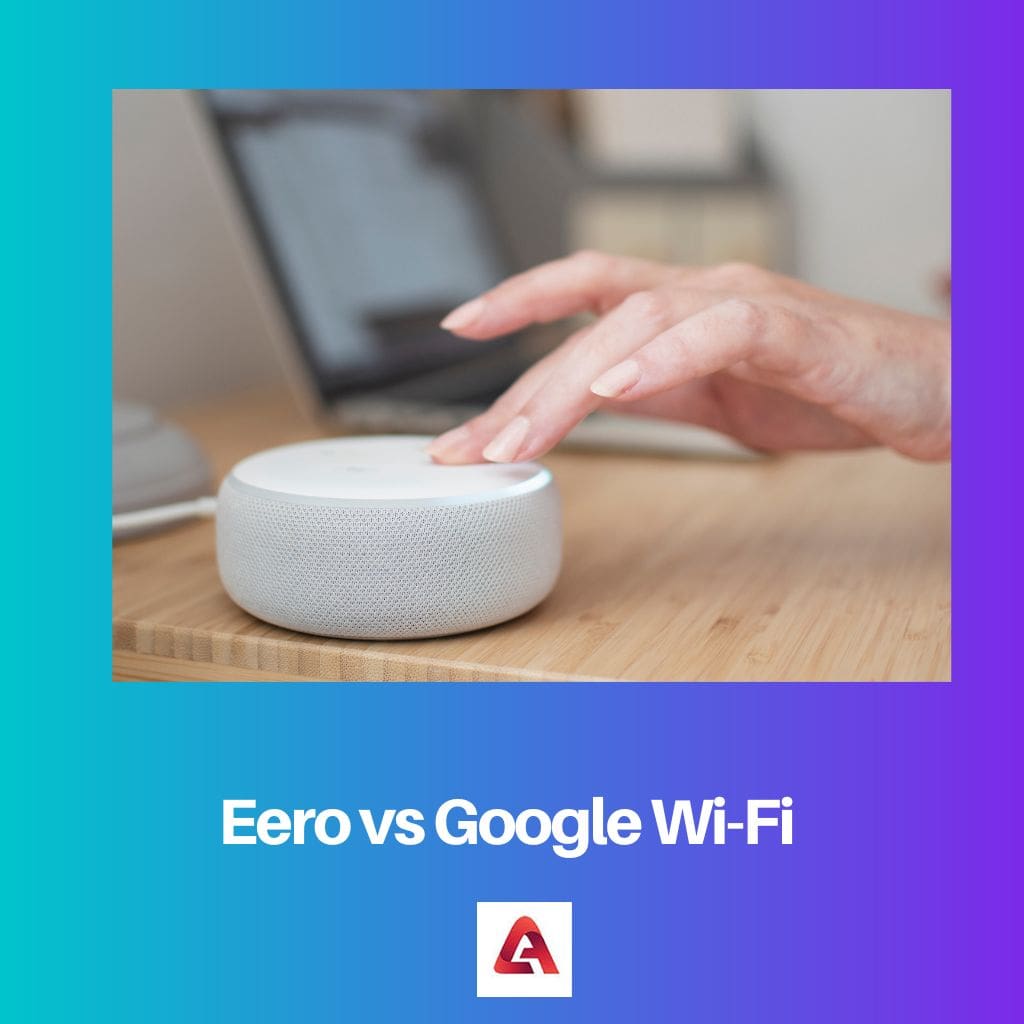When computers had just stepped into the world of the internet, there was only one computer that would connect to the modem at a time.
But with the advancement of technology came Wi-Fi, which made possible the connection of multiple computers at a time to the internet.
But nothing comes with a perfect solution. Too many computers connected at once can slow down the internet speed to a great degree.
Then comes Wi-Fi mesh routers such as Eero and Google Wi-Fi to our help. These mesh Wi-Fi routers came with the idea of having more than one router, which in turn forwards the traffic of the devices connected to it from one mesh router to another until it reaches the main Wi-Fi router.
Key Takeaways
- Eero offers easy-to-use mesh networking solutions with strong performance.
- Google Wi-Fi combines a user-friendly setup with advanced networking features.
- Both systems provide reliable Wi-Fi coverage but differ in design, features, and price points.
Eero vs Google Wi-Fi
Eero Wi-Fi has a mesh router system and a multiple access point that provides a fast, reliable coverage throughout the home all on a single network. It offers more consistent speeds. Google Wi-Fi is a home mesh system that provides a seamless, reliable Wi-Fi coverage throughout the home.

Eero, being the pioneer of mesh networks, brought us one of the fastest Wi-Fi networks at the cheapest cost possible. Like every mesh router, Eero has one main router and several secondary units.
Eero is an Amazon product, which means it is pretty easily available.
Another mesh router that comes in a sleek design is Google Wi-Fi, which comes in a cylindrical shape, is smooth, and is finished in white.
Google has given them a prominent look, and they look like some sort of speaker.
Comparison Table
| Parameters of Comparison | Eero | Google Wi-Fi |
|---|---|---|
| Area of coverage | Eero covers an area of up to 5000 square feet. | Google Wi-Fi covers an area of up to 4500 square feet. |
| Flash memory | Eero has a flash memory of 1 GB. | Google Wi-Fi has a flash memory of 4 GB. |
| Compatible | Eero is compatible with Amazon Alexa. | Google Wi-Fi is compatible with Google Home. |
| Subscription service | Eero has a subscription service called “Eero Plus,” which provides users with extra functions. | Google Wi-Fi has no subscription service. |
| Security | Eero is said to have more security than Google Wi-Fi. | Google Wi-Fi is said to be less secure. |
| Installation | Eero gives more detailed guidance on installation. Even a layman can easily install Eero. | Google Wi-Fi directly jumps into the installation process. |
| Ethernet | The Eero has 2 ethernet ports. | Google Wi-Fi has 2 GB ports. |
| Network stability | Eero provides a more stable network than Google Wi-Fi. | Google Wi-Fi is said to have the least stable network among mesh routers. |
What is Eero?
Amazon Eero is a pioneer in mesh networks that come in handy and are cheap. They are small in size and can easily be hidden behind other small objects.
They are minimalistic in design and have a smooth white finish. Eero comes with one main router and two secondary units, which should be connected to electrical ports.
Eero has an easy installation process and guides a person like a non-pro.
For example, Eero guides one when and where to plug a wire. Although Eero is small in size, it covers an exceptional area of 5000 square feet.
Eero mesh networks support Amazon Alexa and allow one to control the Wi-Fi with one’s voice. Eero also supports beamforming, which means it directs the Wi-Fi to the device that is connected instead of dispersing it all throughout the room.
Eero comes with a 1 GB flash memory. Eero also automatically prioritizes devices that are conferencing or streaming.
Eero was launched in 2014, which was then acquired by Amazon in February of 2019. Eero also offers an extra subscription option that provides “Eero Plus,” which in turn gives us extra functions.
What is Google Wi-Fi?
Google Wi-Fi is a mesh router that comes in a pack of three. It has a main router and other secondary units.
Google Wi-Fi routers have a sleek design and are very prominent in shape and size. They look like speakers are white in color and have a smooth finish.
Google Wi-Fi routers cover an area up to 4500 square feet and have a flash memory of 4 GB.
Google Wi-Fi supports Google Home. The LED strips located at the center of the routers provide us with the instantaneous status of our wireless connection.
Google Wi-Fi offers us a parental control option that helps us block substandard sites and a safe search option. Google Wi-Fi provides us with extra features without any additional cost.
Google Wi-Fi, first released in the year 2016, comes with an affordable price tag. Google Wi-Fi has nodes and uses self-healing technology.
Self-healing technology helps the nodes transfer traffic or signals automatically to the next best available node.

Main Differences Between Eero and Google Wi-Fi
- Eero covers an exceptional area of up to 5000 square feet, while Google Wi-Fi covers an area of 4500 square feet.
- Amazon Eero routers are small in size, so much so that they can easily be hidden behind any small object. However, Google Wi-Fi routers are prominent in size and shape. They are cylindrical in shape and look like speaker boxes.
- Eero has a flash memory of 1 GB, while Google Wi-Fi has a flash memory of 4 GB.
- Amazon Eero is compatible with Amazon Alexa. On the other hand, Google Wi-Fi is compatible with Google Home.
- Eero has a subscription service called “Eero plus,” which makes available extra functions while Google Wi-Fi has none.
- While Eero automatically prioritizes devices that are on streaming or conference, Google Wi-Fi has a manual setup.





